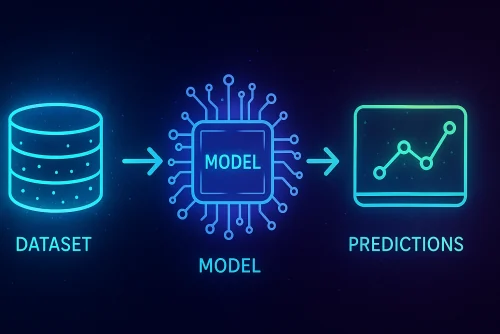Ever wondered how Netflix recommends movies you might like, or how your email service filters out spam? These are everyday examples of Machine Learning (ML) in action. But what exactly is Machine Learning?
At its core, Machine Learning is a subfield of Artificial Intelligence (AI) that gives computers the ability to learn from data without being explicitly programmed for each specific task. Instead of writing step-by-step instructions for every possible scenario, you feed data to an ML algorithm, and it learns patterns, makes predictions, or finds structures within that data. Think of it as teaching a computer by example, much like we learn from experience. This is a key part of Data Science.
How is Machine Learning Different from Traditional Programming?
Machine Learning is transforming nearly every industry because it can:
- Automate Repetitive Tasks: Think of categorizing customer support tickets or transcribing audio.
- Make Accurate Predictions: Forecasting stock prices, predicting weather, or identifying diseases from medical scans.
- Personalize Experiences: Recommending products, tailoring news feeds, or adjusting a smart thermostat to your preferences.
- Discover Hidden Insights: Finding patterns in complex data that humans might miss, like identifying fraudulent transactions or discovering new drug interactions.
Main Types of Machine Learning
Machine Learning is broadly categorized into three main types, based on how the algorithm learns:
Supervised Learning: Learning with Labeled Data
- Concept: The algorithm is trained on a dataset where each input example is paired with a correct output label. It learns to map inputs to outputs.
- Analogy: Showing a child pictures of cats and dogs, telling them which is which, until they can identify them on their own.
- Tasks:
- Classification: Predicting a category (e.g., spam or not spam, cat or dog).
- Regression: Predicting a continuous value (e.g., house price, temperature).
Unsupervised Learning: Finding Patterns in Unlabeled Data
- Concept: The algorithm is given data without any predefined labels and tries to find patterns, structures, or relationships on its own.
- Analogy: Giving a child a box of mixed Lego bricks and letting them sort them into groups based on color, shape, or size without telling them how.
- Tasks:
- Clustering: Grouping similar data points together (e.g., customer segmentation).
- Dimensionality Reduction: Simplifying data by reducing the number of variables while preserving important information.
- Association Rule Mining: Discovering relationships between items (e.g., "customers who bought X also bought Y").
Reinforcement Learning: Learning through Trial and Error
What is Data in Machine Learning?
Data is the lifeblood of Machine Learning. The quality and quantity of your data significantly impact the performance of your ML model. Data can come in many forms: numbers, text, images, videos, audio, etc. Understanding your data (features and labels) and preparing it properly (data cleaning and feature engineering) are crucial steps before feeding it to an algorithm.
Why is Machine Learning So Popular Now?
While the concepts of ML have been around for decades, several factors have led to its recent explosion in popularity:
Machine Learning is a vast and exciting field that is continuously evolving, with new algorithms and techniques being developed all the time. It's transforming industries and opening up new possibilities for how we interact with technology and solve complex problems. As you delve deeper, you might encounter terms like Deep Learning, which is a powerful subfield of ML, and concepts like model evaluation and avoiding overfitting/underfitting.
What real-world application of Machine Learning fascinates you the most?
Have questions? Feel free to ask in the comments below!

Comments